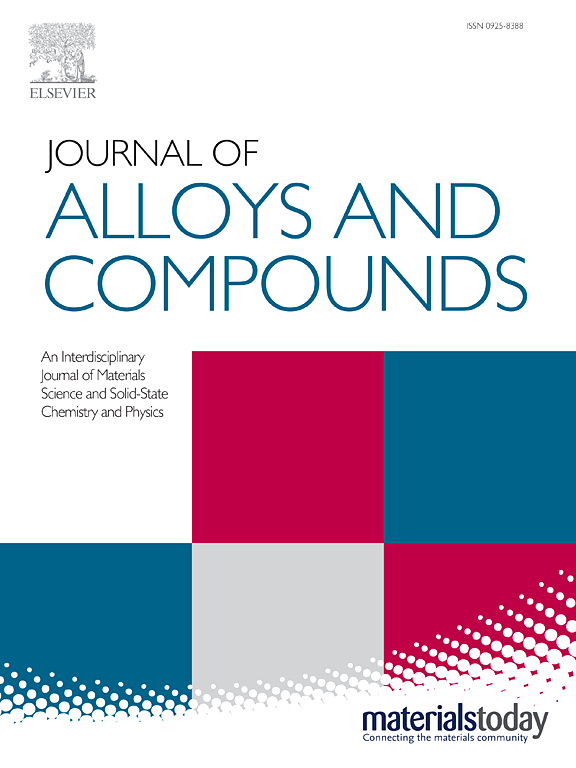Microstructure and mechanical properties of Mo2FeB2-316SS cermets prepared by vacuum sintering
IF 5.8
2区 材料科学
Q2 CHEMISTRY, PHYSICAL
引用次数: 0
Abstract
Mo2FeB2-316 stainless steel (316SS) cermets with varying Mo2FeB2 powder contents (69.5, 75, 80.5, wt%) were prepared. The Mo2FeB2 powder was first synthesized at 1000 ℃ for 1 h by reaction between ultrafine Mo powder and FeB powder, and then mixed with 316SS powder to prepare the Mo2FeB2-316SS cermets via vacuum sintering at different temperatures. The results revealed that in the cermets, some black near-spherical particles existed at the interface of the Mo2FeB2 hard phase and Fe binder phase due to the oxidations of Si and Mn elements introduced through FeB and 316SS powders. The presence of Si-Mn complex oxides reduced the interfacial wettability and thereby increased porosity, which deteriorated the hardness and transverse fracture strength. Whereas, it improved the fracture toughness through crack bridging and pinning effect. The cermet with 80.5 wt% Mo2FeB2 power, sintered at 1200 ℃, achieved superior comprehensive properties with Vickers hardness of 1258 HV30, transverse rupture strength (TRS) of 1735.9 MPa and fracture toughness (KIC) of 17.5 MPa·m1/2. As the temperature increased, the hardness, fracture toughness and transverse rupture strength decreased. The growth of abnormal grains was the main reason, which was related to a two-dimensional nucleation mechanism.
真空烧结制备的 Mo2FeB2-316SS 金属陶瓷的微观结构和力学性能
制备了Mo2FeB2-316不锈钢(316SS)陶瓷,Mo2FeB2粉末含量分别为69.5、75、80.5、wt.%。首先用超细Mo粉与FeB粉在1000℃下反应1 h合成Mo2FeB2粉末,然后与316SS粉末混合,在不同温度下真空烧结制备Mo2FeB2-316SS陶瓷。结果表明:在金属陶瓷中,由于Si和Mn元素通过FeB和316SS粉末的氧化作用,在Mo2FeB2硬相和Fe结合相的界面上存在黑色的近球形颗粒;Si-Mn复合氧化物的存在降低了界面润湿性,从而增加了孔隙度,从而降低了硬度和横向断裂强度。而通过裂纹桥接和钉住作用,提高了断裂韧性。经1200℃烧结,Mo2FeB2粉含量为80.5 wt.%的陶瓷综合性能优异,维氏硬度为1258 HV30,横向断裂强度(TRS)为1735.9 MPa,断裂韧性(KIC)为17.5 MPa·m1/2。随着温度的升高,硬度、断裂韧性和横向断裂强度降低。异常晶粒的生长是主要原因,这与二维形核机制有关。
本文章由计算机程序翻译,如有差异,请以英文原文为准。
求助全文
约1分钟内获得全文
求助全文
来源期刊

Journal of Alloys and Compounds
工程技术-材料科学:综合
CiteScore
11.10
自引率
14.50%
发文量
5146
审稿时长
67 days
期刊介绍:
The Journal of Alloys and Compounds is intended to serve as an international medium for the publication of work on solid materials comprising compounds as well as alloys. Its great strength lies in the diversity of discipline which it encompasses, drawing together results from materials science, solid-state chemistry and physics.
 求助内容:
求助内容: 应助结果提醒方式:
应助结果提醒方式:


